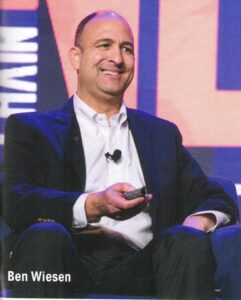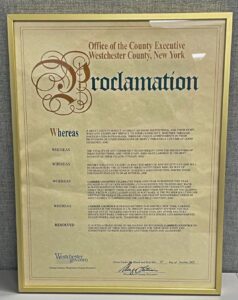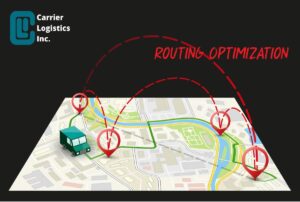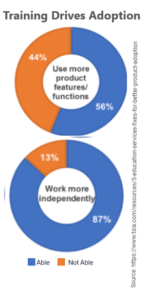
Keys to Increasing Profitability
by Larry Kerr, President, EBE
A key to increasing profitability is within internal processes. As the economic forecast becomes more uncertain and topline revenue is in jeopardy, such efficiencies can be the difference between profitability and loss.
One of the areas to improve efficiency is within the accounts payable process. Departments that are not automated tend to be overstaffed, prone to paying duplicate invoices, incurring late fees and experiencing high Human Resources interaction due to turnover and training. So, what are the advantages of automated AP?
In addition to improved cashflow as well as team member productivity, the following procedures are significantly enhanced when automating the AP process:
Invoice cycle times are among the top accounts payable concerns. This is no surprise when you consider that invoices-paid-to-terms is the top metric against which accounts payables staff is measured.
Automated systems significantly increase on-time payments, which eliminate late-payment penalties, create early payment discount opportunities, strengthen supplier relationships, and provide buyers with greater leverage when it is time to renegotiate contracts with key suppliers.
Lower invoice processing cost is an accounts payable priority. The root of the high costs of invoice processing is that, on average, businesses receive over 60% of their invoices as paper or emails. Manually processing paper invoices results in costly and error-prone keying of invoice information, lost or misplaced invoices, long approval, and exception resolution cycles.
Improve productivity within the AP staff through automation. Accounts payable is the most manual and paper-intensive finance and administration function, and the one that requires the most time and effort, according to the Institute of Finance & Management. Information needs to be manually keyed, and paper documents are required to be physically routed, stored and maintained. In many businesses, paper invoices are handled multiple times during the approval process and are frequently lost or pushed to the bottom.
Provide suppliers with a “view” into the AP process. By providing a portal where suppliers can obtain a self-service view as to a payment status reduces the amount of time AP staff has to answer calls and search for information as compared to a manual system.
Straight-through processing rate provides the greatest efficiencies. In a paper-based accounts payable environment, staff must collect and manually reconcile PO, invoice and payment information. This laborious and time-consuming process is necessary for effective working capital management and helps prevent fraud and duplicate payments. Through automation this manual process becomes a work-by-exception workflow reducing time and labor costs.
These are a few of the many ways that automating your AP process can benefit your organization. In conclusion, automation of the AP process prevents revenue leaks associated with excessive labor, late fee charges and missed early pay discounts improving efficiency and increasing profitability.
Click here to learn more about EBE.


 CLI Participates on Making LTL Cool Again Panel
CLI Participates on Making LTL Cool Again Panel Diamond Line Delivery is an LTL carrier servicing Oregon, Washington, Utah and Idaho. They offer next-day service between most Metropolitan areas within their network. They also work with a number of partners to offer uninterrupted service across the entire West Coast. Diamond Line is looking forward to using the optimization solutions in the newest release of FACTS.
Diamond Line Delivery is an LTL carrier servicing Oregon, Washington, Utah and Idaho. They offer next-day service between most Metropolitan areas within their network. They also work with a number of partners to offer uninterrupted service across the entire West Coast. Diamond Line is looking forward to using the optimization solutions in the newest release of FACTS. BSP Trans, a New England-based trucking company, is headquartered in Londonderry, New Hampshire. BSP has earned an outstanding reputation for service by providing coverage to all points in the states of Maine, New Hampshire and Vermont through a six-terminal network, a talented, dedicated employee base and a fleet of equipment. Their customers include manufacturers, distributors and retailers of all kinds, from local companies to international shippers. BSP eagerly awaits the benefits of improved freight visibility for its clients that the FACTS system provides.
BSP Trans, a New England-based trucking company, is headquartered in Londonderry, New Hampshire. BSP has earned an outstanding reputation for service by providing coverage to all points in the states of Maine, New Hampshire and Vermont through a six-terminal network, a talented, dedicated employee base and a fleet of equipment. Their customers include manufacturers, distributors and retailers of all kinds, from local companies to international shippers. BSP eagerly awaits the benefits of improved freight visibility for its clients that the FACTS system provides.

 Freight management software provider Carrier Logistics Inc. (CLI) has introduced a new routing logic and planning optimization solution that enables full terminal optimization, allowing fleets to very quickly and automatically have every shipment for every customer at every terminal planned for the right trailer in the right sequence.
Freight management software provider Carrier Logistics Inc. (CLI) has introduced a new routing logic and planning optimization solution that enables full terminal optimization, allowing fleets to very quickly and automatically have every shipment for every customer at every terminal planned for the right trailer in the right sequence.


 That is why we have created an online library of our most popular functions to better educate our community. Classified under different areas, training video categories include:
That is why we have created an online library of our most popular functions to better educate our community. Classified under different areas, training video categories include: Kevin F. Juber, 65, of Fuquay-Varina, NC and Tolland, CT, beloved husband and father, passed away following a hard-fought battle with pancreatic cancer. He is survived by his loving family, his wife of 40 years, Linda, three children and two grandchildren.
Kevin F. Juber, 65, of Fuquay-Varina, NC and Tolland, CT, beloved husband and father, passed away following a hard-fought battle with pancreatic cancer. He is survived by his loving family, his wife of 40 years, Linda, three children and two grandchildren.